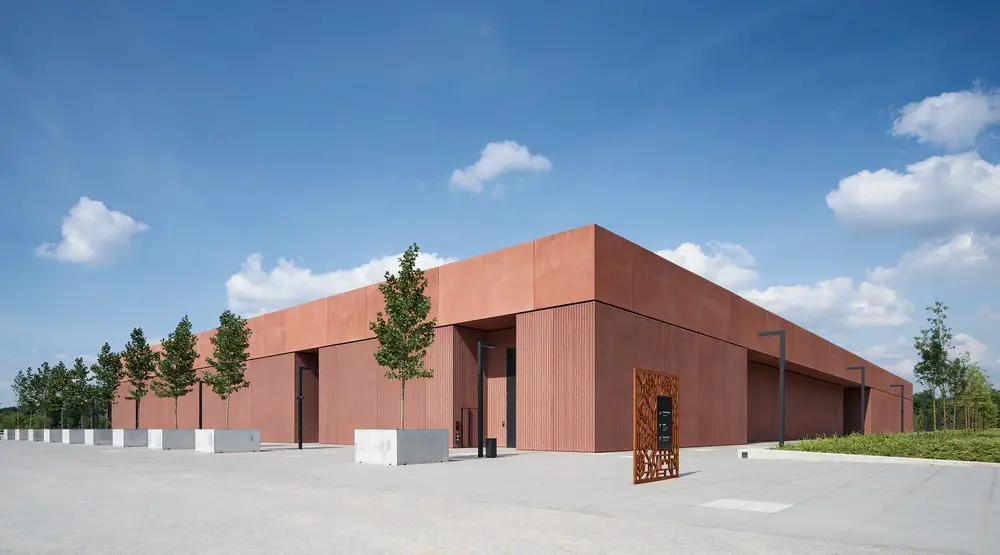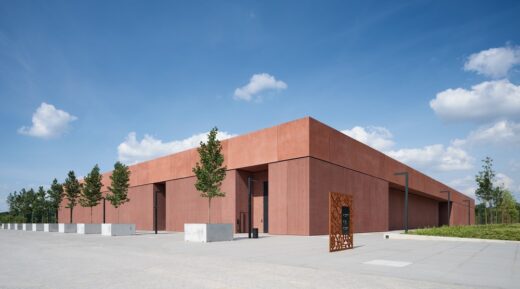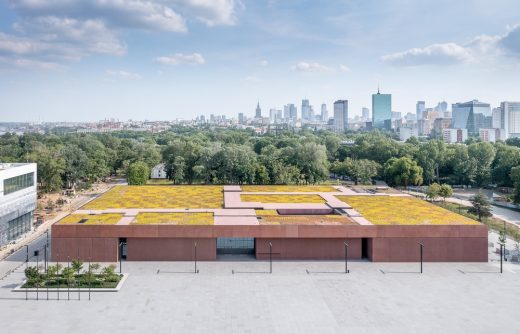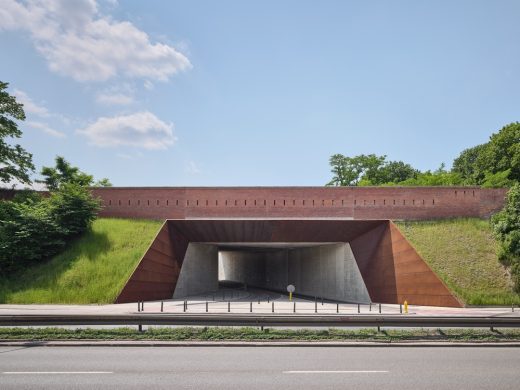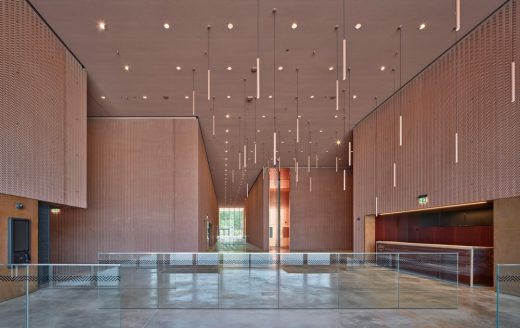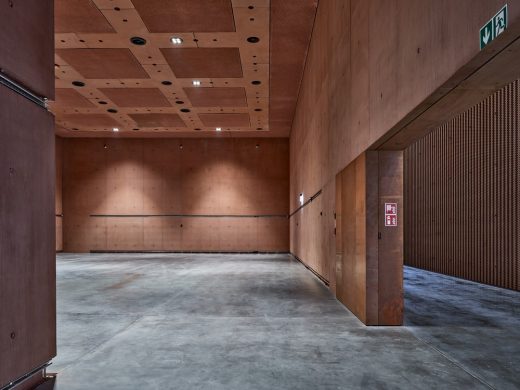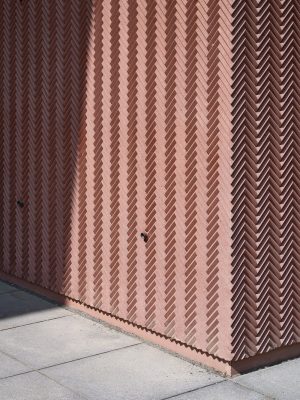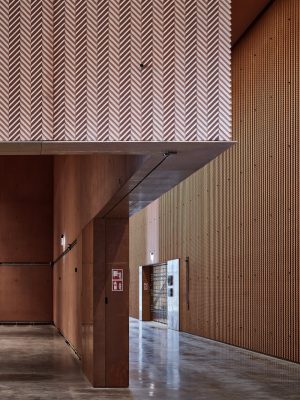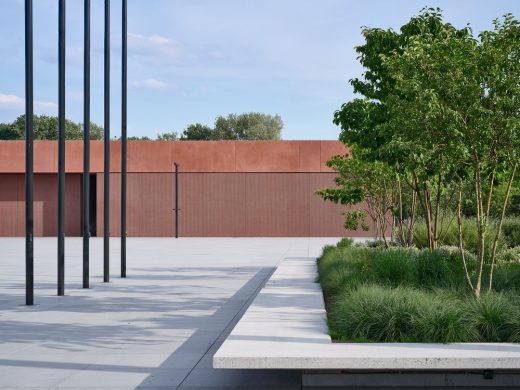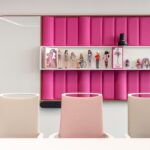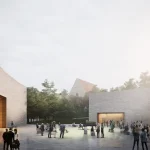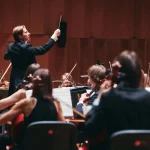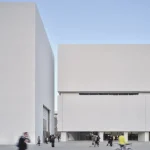Polish Army Museum Warsaw building, Polish modern architecture development photos
Polish Army Museum in Warsaw
post updated 29 June 2024
Architecture: WXCA
Location: Al. Jerozolimskie 3, 00-495 Warszawa, Poland
Photos by Marcin Czechowicz
14 Aug 2023
Polish Army Museum, Poland
• Located at the historic Warsaw Citadel, the Polish Army Museum is a major addition to the cultural landscape of the Polish capital.
• The museum project involves a mix of historic buildings and new construction, with sensitive attention given to the relationship between the distinct components and their context.
• Buro Happold was responsible for structural, concrete façade and MEP engineering for the museum’s building, as well as underground parking, an entrance tunnel and underground utilities throughout the Citadel.
The Polish Army Museum, designed by WXCA architects and with engineering by Buro Happold, opened in Warsaw on the weekend before 15 August 2023, marking the occasion of Armed Forces Day in Poland. The project connects the history of the city, and the country as a whole, with the contemporary urban context. The museum site occupies 32 hectares of the Warsaw Citadel, a hilltop fortress built in the 1830s by the army of the Russian Empire. The Citadel was used by the Polish military and has been a restricted area, until now.
Buro Happold worked closely with WXCA to reinvigorate the site, which overlooks the Vistula River and is separated from the city by an embankment. The Polish Army Museum building, together with the Museum of the 10th Pavilion of the Warsaw Citadel and the Katyń Museum, stands alongside the soon-to-be-built Museum of Polish History, collectively forming one of Europe’s largest museum complexes. The Polish Army Museum project is part of Buro Happold’s extensive, ongoing engagement with the changing urban landscape of Warsaw. Over 25 years and multiple projects, Buro Happold’s Warsaw office has made a lasting contribution to the evolution of one of Europe’s most dynamic and exciting cities.
WXCA’s design for the Polish Army Museum comprises two buildings, with the completed South Building to be joined later by a second building on the northern side of Gwardii Pieszej Koronnej Square, as well as the refurbishment of a number of historically listed buildings. The South Building consists of eight blocks united by a shared green roof that echoes the natural environment of the surrounding park. The total area of the building is more than 12,000 square metres and provides exhibition space dedicated to the display of the museum’s permanent collection of Polish arms and also offers flexible space for temporary exhibitions and events. The museum building is constructed from cast-in-place concrete, up to 7.5 metres in height. The façade is defined by a bespoke formwork pattern of chevrons that refers to military decoration, reflecting the site’s history over two centuries and its continuing close relationship with the military. This pattern is repeated on the walls of the galleries and other interior spaces.
The simple orthogonal volume of the South Building masks a complex technical infrastructure. The technical requirements are integrated into the design, a relationship that required close collaboration between Buro Happold and WXCA. MEP functions are cast in the main walls, and the concrete ceiling and the roof provide a thermal mass that stabilises indoor temperature. A low-energy system of year-round heating and cooling is created via a ground exchanger, comprising 91 vertical boreholes drilled to a depth of 150 metres, which work in combination with heat pumps.
Buro Happold designed a new entrance tunnel, allowing for access from the Vistula riverside and through the embankment at the Citadel’s base. A post-tensioning structural system minimises the amount of concrete required for the tunnel. A new entrance and recently designed footbridge further aid in circulation, intensifying the connections within the Citadel and creating new links between the Citadel and the city.
WXCA: “We opted for coloured architectural concrete, which has a similar colour to the brick walls of the Warsaw Citadel. The monumentality of the geometric body of the museum was softened by a specially designed spatial pattern imprinted on the plane of the massive blocks—the chevron pattern. The chevron pattern was intended to bring military motifs to mind. Its spatial form was conceived as a surface for a sculptural play of light and shadow that changes depending on the time of day and thus alters the overall perception of the building. The size of the individual ornamental modules was designed based on the scale of a human being, namely the human hand, thanks to which we can experience a gradual aesthetic experience—as you approach the monumental, disciplined body, the details of the façade come to the fore.”
Sławomir Pastuszka, Group Director, Buro Happold: “The Warsaw Citadel has been an unapproachable, mysterious point in the city’s urban fabric for almost two centuries. With the project for the Polish Army Museum, this rich historical site is reimagined for a contemporary public, for the people of Warsaw and Poland as a whole. The project provided an opportunity for Buro Happold to apply our expertise in combining structural and MEP engineering within architectural design, working in close cooperation with WXCA. This approach was especially important in adapting to the Citadel’s significance as an essential part of the city’s architectural heritage while envisioning its revitalisation. The result is a site that is open to the city, welcoming to visitors, and an exciting new hub of culture and heritage for the city of Warsaw.”
Polish Army Museum in Warsaw, Poland – Building Information
Name: Polish Army Museum
Location: Warsaw, Poland
Client: Ministry of National Defence, Poland
Architect: WXCA – https://www.wxca.pl/
Engineering: Buro Happold – https://www.burohappold.com/
About Buro Happold
Buro Happold is an international, integrated consultancy of engineers, designers and advisers. For over 45 years, they have built an unrivalled reputation by delivering creative, value-led solutions for the benefit of people, places and planet. Described by clients as ‘passionate,’ ‘innovative’ and ‘collaborative,’ Buro Happold is synonymous with the delivery of exceptionally complex projects on every continent, working with the world’s leading architectural practices and organisations, such as the United Nations, UNESCO and C40 Cities. Through a global community of driven, world-leading engineering, advisory and design professionals, Buro Happold is acting to address major challenges in an ever-evolving world. Find out more at www.burohappold.com.
From its office in Warsaw, Buro Happold in Poland has established a strong reputation for completing projects that deliver excellent environmental performance and meet the requirements of a wide range of clients and stakeholders. The team has a thorough understanding of local construction practices and legislation with the support of an extensive international multidisciplinary practice. Projects led by the Warsaw office, including Varso Tower and Varso Place, Q22, Generation Park, the Museum of Modern Art, the Polish Army Museum, the National Polish Radio Symphony Orchestra, Copernicus Science Centre, Koszyki Hall, two metro stations in Warsaw and several others, highlight Buro Happold’s commitment to shaping vibrant urban development and enriching the city’s culture.
Photography: Marcin Czechowicz
Polish Army Museum, Warsaw, Poland images / information received 140823
Address: Al. Jerozolimskie 3, 00-495 Warsaw, Poland, eastern Europe
New Polish Architecture
Contemporary Polish Architecture
Polish Architectural Designs – chronological list
Warsaw Architecture Tours by e-architect – Polish capital city walks for pre-booked groups
Architecture: Foster + Partners
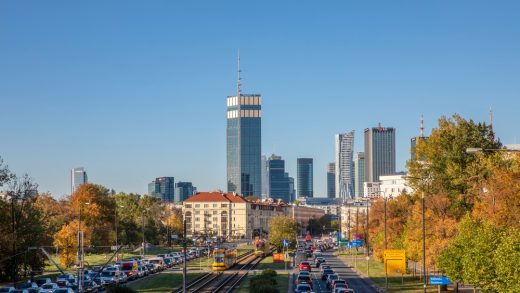
photo © Aaron Hargreaves / Foster + Partners
Varso Tower Warsaw
Architecture: Kuryłowicz & Associates
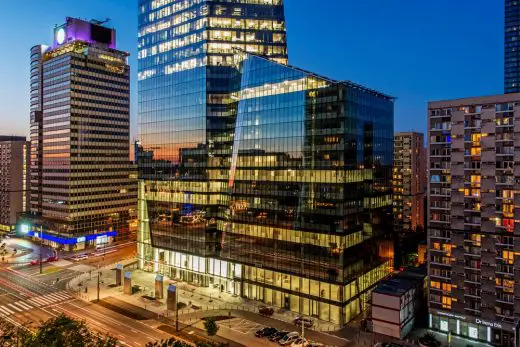
photography : Echo Investments
Q22 Office Building Warsaw
Architecture: Foster + Partners, with Buro Happold
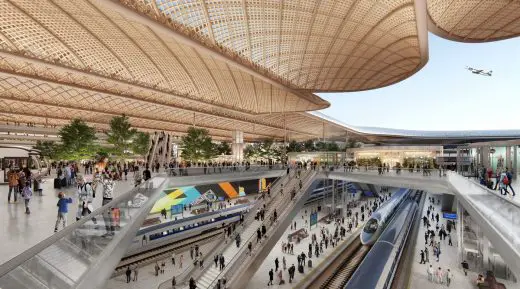
image : Foster + Partners
CPK Airport
Design: Architekt Maciej Franta – Franta Group
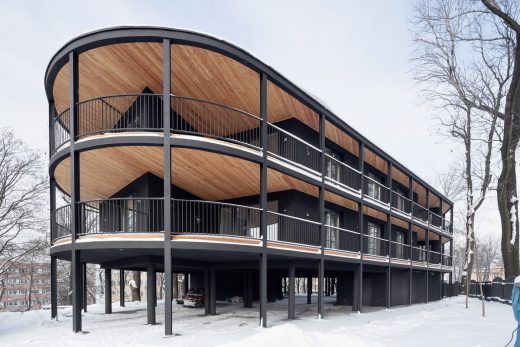
photo : Tomasz Zakrzewski
Villa Reden Apartments
Architects: Nizio Design International
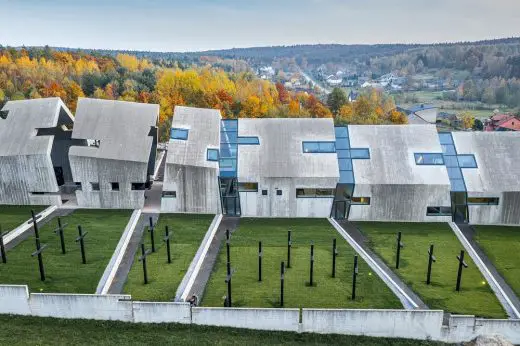
photo : Marcin Czechowicze
Mausoleum of Martyrdom, Michniów
Design: KWK Promes
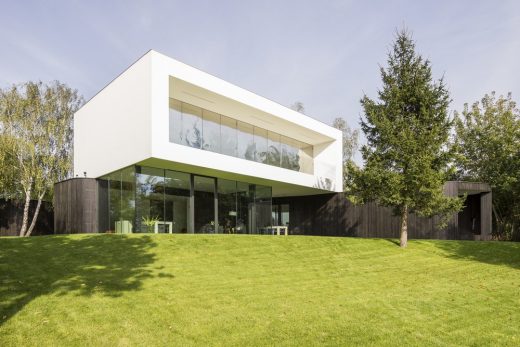
photograph : Jakub Certowicz
House in Izbicy
Comments / photos for the Polish Army Museum, Warsaw, Poland designed by WXCA page welcome

